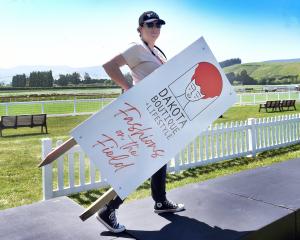His goal?
Finding stoats which might be threatening New Zealand's endangered species.
He has recently been working at Orokonui Ecosanctuary after two stoats were found dead in traps within its predator-proof fence.
Woody is part of a team of dogs trained to detect feral cats, pigs and rodents.
Under the programme, started 16 years ago and now called Conservation Dogs New Zealand, teams travel the country and its outer islands helping the Department of Conservation and pest-free enclosures find species and ensure their islands remain predator-free.
''They are just one tool we use. They are not a silver bullet,'' handler Scott Theobold said.
The advantage of dogs was that they found the species, as opposed to traps which required the pests to go to them.
The dogs worked best when pest numbers were low.
''They're more sensitive.''
It was hard and sometimes dangerous work for the dogs and their handlers.
The dogs were often so focused they did not care if there was a 30m bluff there, he said.
''On Kapiti Island one fell off a bluff, smashing his leg, his teeth, mushing his stomach and was out of action - he was the main mustelid dog in New Zealand.''
Finding the ''perfect dog'' for the job had taken Mr Theobold many years.
He tried fox terriers, but finally decided a border-terrier cross was better.
They were hairier so could cope better working in cold places.
They also followed instructions better and were good around people.
''They can be working eight to 10 hours a day on rocky shores and in bush, so they need to be tough and motivated.''
Working eight hours a day on an island for a month, looking for a pest they probably would never find, meant motivation to carry on was important, as was not being distracted by non-target species.
The dogs wore muzzles so they could not bite their target species.
He and Woody, who came from a long line of predator dogs, had trained and worked closely together and had developed a trust and ''shorthand'' to understand each other.
''He wags his tail all the time, but once it starts vibrating, I know it's another story.''
Eighteen-month-old Woody was still new to the work and had stepped into the shoes of his recently retired father, Crete.
''Woody is the worst stick-chasing dog, but when he puts on the vest he knows it's work time and there is none of that.''











